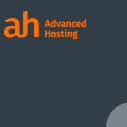- Joined
- Apr 11, 2017
- Messages
- 220
- Points
- 18
Yep, a free, open-source PHP web framework created by Taylor Otwell and first released just 7 years ago. So it's a newcomerI heard more about Laravel, is it a programming language?
Laravel is a web application framework with expressive, elegant syntax.
Laravel attempts to take the pain out of development by easing common tasks used in the majority of web projects, such as authentication, routing, sessions, and caching.
Here is the steps
# cd /bin
#wget https://getcomposer.org/installer
#php installer –check
#php installer
#php /bin/composer.phar create-project laravel/laravel –prefer-dist
#rm -rf public_html
# ln -s laravel/public/ public_html
- Joined
- Jun 16, 2016
- Messages
- 93
- Points
- 8
You can follow these points while you are choosing the best hosting company for you:
-Check the web host’s server uptime record
-Check if they offer multiple add-on domains
-Ask about the company’s refund policy.
-Find out what a basic contract offers.
-Check for specialty features.
-Always check the reviews
- Joined
- Jul 7, 2016
- Messages
- 614
- Points
- 28
This guide requires that you already have:
PHP 5.6.4 or later (PHP 7 is better)
OpenSSL, Mbstring, PDO, Tokenizer, PHP and XML extensions
Apache
1. Login to your VPS via SSH
ssh root@my_serveryum update
yum install git curlComposer is a dependency manager for PHP with which you can install packages. Composer will pull all the required libraries and dependencies you need for your project.
curl -sS https://getcomposer.org/installer | php
mv composer.phar /usr/local/bin/composerInstalling Laravel is a pretty simple process, in this article we will install Laravel using composer create-project command.
Switch to the root of the domain:
cd /home/USERNAME/public_html/composer create-project --prefer-dist laravel/laravel .chown -R USERNAME: USERNAME /home/USERNAME/public_html/5. Configuring cPanel
We need to edit the default web root document server and change it from public_html to public as required by Laravel.
Change Document Origin for Addon Domain
Login to your cPanel at: https://YOUR_SERER_IP:2083 and under the 'Domains' section click on 'Addon Domains'. In the new window you will see a list of all your addon domains, click the edit icon next to the domain's document path and enter the new path /public_html/laravel-addon-domain.com /public.
6. Change the Document Origin for a Primary Domain
In order to change the Document Primary domain/master root, you need to have SSH root access to your server. Open the following file:
nano /var/cpanel/userdata/USERNAME/MY_LARAVEL_DOMAIN.COMdocumentroot: /home/USERNAME/public_html/public/var/cpanel/userdata/USERNAME/MY_LARAVEL_DOMAIN.COM_SSLFinally, save the file and rebuild the Apache configuration:
/scripts/rebuildhttpdconf && service httpd restartHope it helps!
- Joined
- Jun 8, 2022
- Messages
- 2
- Points
- 1
- Joined
- Jan 14, 2022
- Messages
- 50
- Points
- 6
then choose a softaculous app installer from the list of software under the software tab.
Then, in the search bar, type Laravel, and on the following window, click the install now button.
on the following page, complete the requested information and select the quick install option.
Then, select the Install option.
- Joined
- Jun 27, 2016
- Messages
- 56
- Points
- 6
- Replies
- 0
- Views
- 2,003
- Replies
- 0
- Views
- 1,598
- Replies
- 4
- Views
- 3,449
- Replies
- 20
- Views
- 9,926
- Replies
- 1
- Views
- 364
- Replies
- 4
- Views
- 4,473
- Replies
- 5
- Views
- 5,867
- Replies
- 7
- Views
- 4,538
- Replies
- 4
- Views
- 2,764
- Replies
- 1
- Views
- 2,414
- Replies
- 2
- Views
- 4,669
- Replies
- 3
- Views
- 2,532
Latest Hosting OffersNew Reviews
-
Latest hosting offers
-
Anonymous & Offshore VPS HostingBulletproof, Anonymous & Offshore VPS Hosting Provider
- darkvpspro
- Updated:
-
Hostaddon VPS/VDS | EU/US/ASIA | 25/10/2/1 Gbps | SSD NVMe | Upto 50% Off | Storage | DMCA IgnoreUnmetered 1, 10, 25 Gbps Unmetered VPS Hosting
- HostAddon
- Updated:
-
30 Days Free VPS Windows or Linux with Monthly Contract backed by NVMe SSD SANVPS customisble resources
- trulycloud
- Updated:
-
About Us
ForumWeb.Hosting is a web hosting forum where you’ll find in-depth discussions and resources to help you find the best hosting providers for your websites or how to manage your hosting whether you are new or experienced. You’ll find it all here. With topics ranging from web hosting, internet marketing, search engine optimization, social networking, make money online, affiliate marketing as well as hands-on technical support for web design, programming and more. We are a growing community of like-minded people that is keen to help and support each other with ambitions and online endeavors. Learn and grow, make friends and contacts for life.
Discussion
Advertising
Community
The world's smartest hosting providers come here to discuss & share what's trending in the web hosting world!








